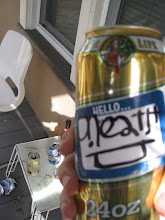Chapter 3- Video and the New Narrative
In this chapter Rush focuses on a handful of artists who work with video in new ways sense the early adoption of the medium. The growth of technology since the 60s has allowed artists to experiment further with their works. Editing practices and manipulations drastically increased on into the 80s and 90s and this chapter focuses on the works of many artists utilizing the possibilities of Video art.
Excerpts & Responses
"Matisse encouraged young artists to discover what story it was they, and they alone, could tell, and to tell it."
This excerpt caught my attention because it is very simple and true. Good work will emerge from an artists own personal ideals, values, interests, and experiences. By sorting through all these items an artist can come to a conclusion to what it is they would like to say, and have a good idea that people will be interested enough to engage. This advice also reaffirmed the direction I have gone in with my own work because I chose my current project for very similar reasons.
"For her, [Mary Lucier] the personal, the political, and the poetic are one. Light and landscape (both internal and external) are metaphors of the essential connection between human beings and their environments. They are also fragile components in cautionary narratives that reveal the destructive underbelly of both nature and the creatures who inhabit this earth."
I liked this passage because a lot my work deals with the human environment. She talks about light and landscape as metaphors but I see them more as blatant truths. A daily interaction with an environment is everyday and commonplace and just is an example of our destructive and, more importantly for me, the beauty that exists in the dark and dingy all the way to the bright and sunny in all different types of landscapes.
"Given [Michal] Rovner's nationality[Israli], associations with images of Holocaust prisoners and other victims of war come easily to mind. Rovner, however, refuses to be specific about the meaning of her work, preferring to allow her seamless mixture of realism and abstraction to address universal emotions."
I thought this passage was interesting because she does not want to explain her work. I can appreciate that stance, while at the same time feel at odds with it. I think that it would be nice to create a piece of work and not give an explanation for it, to just let the viewer interpret it as they wish and take and what they will from it. In a way it becomes accessible to anyone. Conversely though, I think it is important to give a viewer an insight to your intentions. This way, your intent is made clear and gives the viewer a vague guide as how to take it in. This seems more important to me when dealing with conceptual art because the focus is primarily on the idea, and if the viewer isn't guided enough, they might not take what you intended them to take. This could be a good or bad thing depending on your stance.
"'Post-production,' 'digital manipulations,' high-definition volumetric display,' 'film to video transfers,' these are not phrases associated with the early years of Video art. For artists like Rovner and virtually all other contemporary artists working with video, the medium is definitely not the message. There is nothing of particular interest about the flatness of video or even the real-time aspect of video as there had been in the last 1960s. Video, along with music and basic communication (the telephone, the computer) has gone digital. ...Video art, as constituent part of the history (albeit recent history) of art, is slipping away from the grasp of art history as it has been known. It will not disappear from galleries and international exhibitions in the near future, but it will not be long before it will be beyond the grasp of current art-historical languages. Already Video art has become a subsection of Filmic art, a term better suited to the actual practice of most media artists today."
I thought this final paragraph of the chapter summarized the landscape of Video art well. The explanation of how Video art is becoming more distanced from art history was satisfying to read because I agree. It is very difficult to compare video works and installations to the early masters and it gives me the sense that Video art has tumbled into its own little bubble in the art world. Here the rules can be drastically different from other mediums because of its uniqueness and broad applications.
Subscribe to:
Post Comments (Atom)

No comments:
Post a Comment